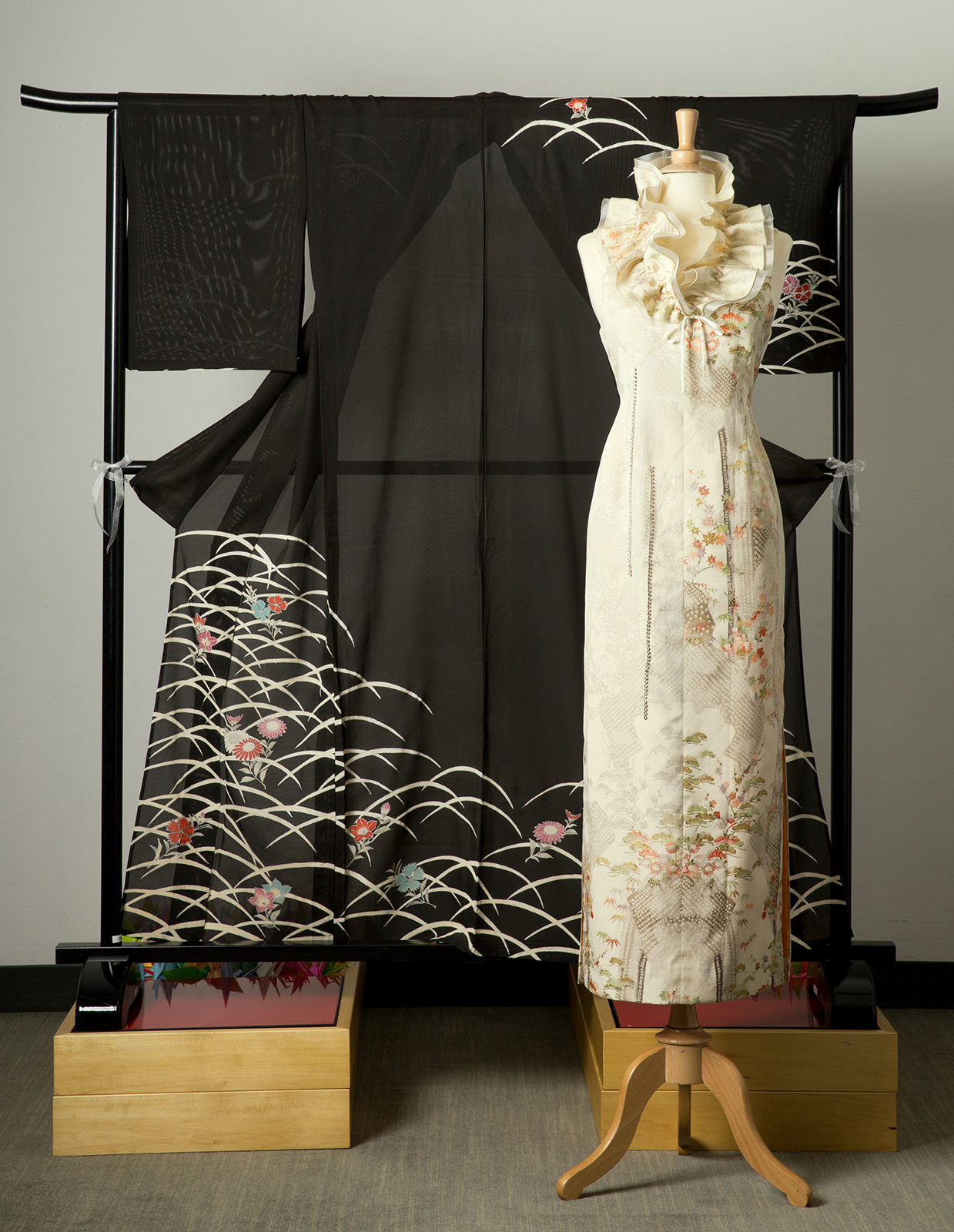FAQ・着物の知識
Knowledge
Teller about Kimono Culture ”Why do I remake KIMONO ?”
◆ Some Things You May Not Know About Silk Kimono
 Producing a single roll of kimono fabric requires the expertise of more than 20 well skilled artisan with over 20 years experience.
Producing a single roll of kimono fabric requires the expertise of more than 20 well skilled artisan with over 20 years experience.
The production is divided into numerous processes, each of which necessitates the highest degree of skill.
The majority of processes are conducted by hand, requiring the utmost focus over extended periods of time.
This can also be likened to an orchestra, with each player (skilled artisan) performing a specific part under the conductor (designer) for the creation of a single magnificent harmony.
This is, of course, an expensive process.
A single roll of kimono fabric is made from approximately 2700 silk worm cocoons.
A standard kimono set (including kimono, obi belt, nagajuban underwear, obi sash, obijime cord etc.) requires around 10,000 silk cocoons.
It’s really a shame to let old kimonos gather discard in a chest of draws. Wouldn’t you say ?
FAQ
Question1
Can an elder woman be wearable very vivid color KIMONO DRESS ?
Answer1
The gaudy Kimono can be wearable for elder women as western clothes.
The Kimono colors are more noble and gorgeous by piling some colors than normal fabric even though vivid colors.
Because it is really authentic pure silk.
The skin color will become brighter.
I believe even if the shape is changed, Kimono fabric keeps still pure authentic” !
Question2
I understand that KIMONO DRESS is more convenient than Kimono. But the after-care is still complicated and expensive ?
Answer2
As you know that the under-wear is same as usual, you can feel more comfortable and sense of superiority.
I recommend that you use an inner with high neck collar or a stole for neck , with sleeve for armpit when you put on KIMONO DRESS.
You can ask “DRY” cleaning to a laundry shop as usual except special fabric (for example, gold/silver yarn embroidery). The price is same as silk clothes.
In addition, you don’t need to pay attention to the season of Kimono motif on western clothes.
Recent Comments